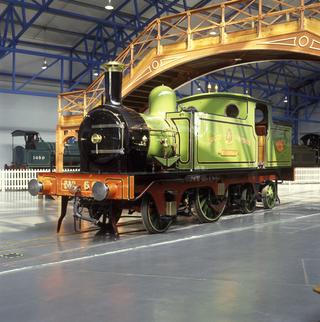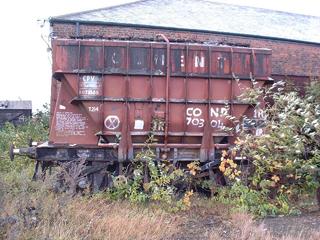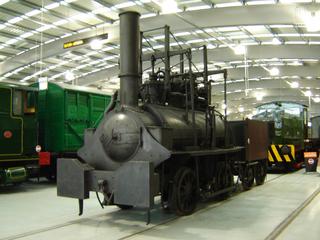
Brake van, London & South Western Railway
- maker:
- Eastleigh Works

Brake Van, London & South Western Railway, 10 Ton goods brake van (Road Van) No 99 of 1894 (British Railways No S56055).
On a railway system where most goods wagons were not fitted with automatic brakes, the brake van was essential for goods train safety. Provided by the railway companies, brake vans carried tail lamps and housed a handbrake to assist with braking on steep downhill gradients and maintain the integrity of the train while accelerating or coming to a stand. Ballast weights were built into the van’s chassis to aid adhesion when applying the handbrake. The guard, who worked the handbrake and protected the rear of the train in an incident, had an observation veranda and basic indoor accommodation equipped with a stove, seating and lockers containing safety equipment such as shunting poles, detonators, and track circuit wires.
Designed by William Panter, Carriage and Wagon Superintendent of the London & South Western Railway (LSWR), No 99 was built in 1894 at the company’s recently-built Eastleigh Carriage and Wagon Works. It is a ‘road van’, a category of brake van with a secondary function of carrying ‘smalls’ traffic – part-loads of merchandise – or parcels on pick-up goods trains that stopped at various stations during the journey. This function is evidenced by the large side doors that allowed the loading of freight and parcels from platforms.
The Southern Railway inherited 444 of these vehicles in 1923. With 10 tons of cast-iron ballast, their braking power was limited, and sometimes two were used on heavier trains on steep inclines; this was determined by the working timetable. The vans could be found across the Southern Railway’s system, including the Isle of Wight, although the carriage of smalls traffic had ceased by the late 1920s. Indeed, complaints of draughts caused the side doors to be permanently shut. Several passed into British Railways ownership upon nationalisation in 1948. Many were allocated to specific duties, while others saw out their working lives in departmental service, the last being withdrawn in 1967.
Details
- Category:
- Locomotives and Rolling Stock
- Object Number:
- 1978-7091
- Materials:
- wood (unidentified) and metal (unknown)
- type:
- railway wagon




